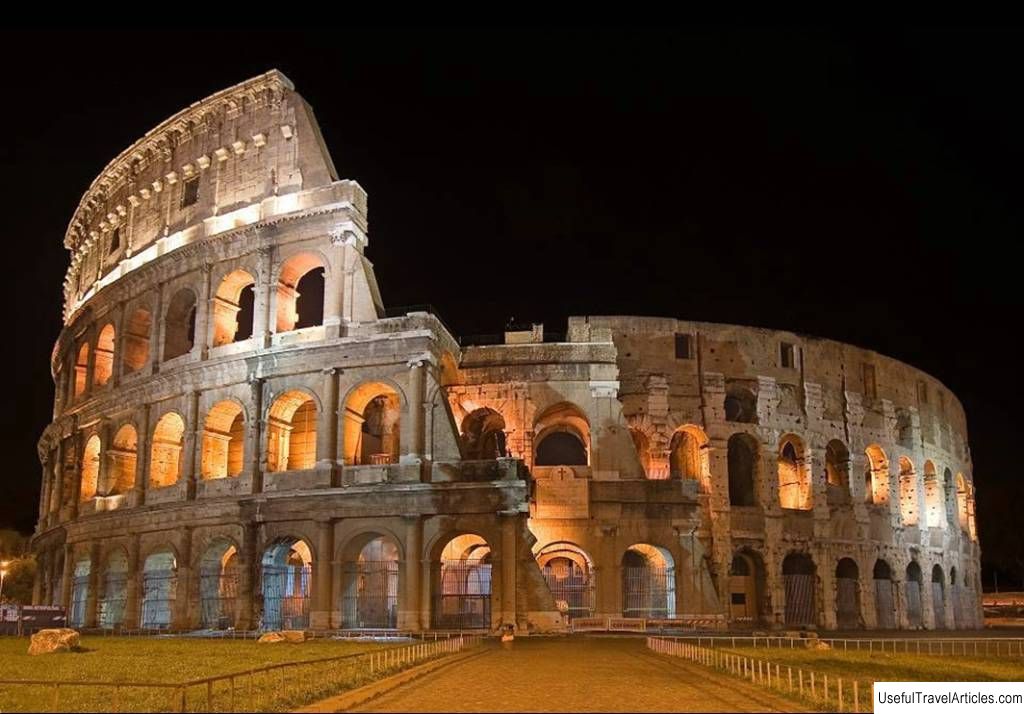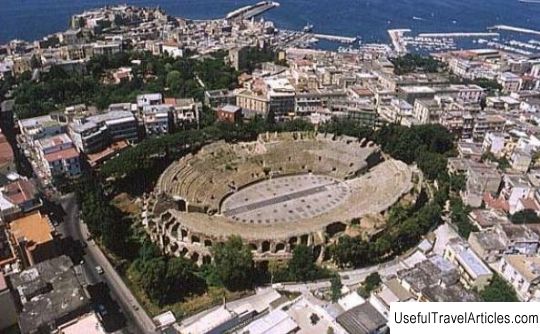Colosseum (Colosseo) description and photos - Italy: Rome
Rating: 9,3/10 (3945 votes) 
Colosseum description and photos - Italy: Rome. Detailed information about the attraction. Description, photographs and a map showing the nearest significant objects. The title in English is Colosseo. Photo and descriptionThe Colosseum, a symbol of the glory of the Eternal City, is larger than any amphitheater ever built in Rome. Work on its construction began in the first years of Vespasian's reign, and in 80 year Titus gave instructions for the grand opening of the amphitheater. Alexander Sever and Decius restored it after fires in 217 and 250, respectively. The last alterations were undertaken by Theodoric, and after the 6th century the building was consigned to oblivion. Frequent earthquakes caused irreparable destruction, and over time, fragments of the building began to be used as building material for new structures. Bread and circuses!The distribution of spectator seats in the stands was carried out in strict accordance with the social belonging to the townspeople. Accordingly, the lower the position, the higher the place was. The rows closer to the arena were for senators. Internal passages allowed a huge crowd of spectators to move freely and take up empty seats. There is conflicting opinion about the number of spectators that the Colosseum could accommodate, but the approximate figure is 50 thousand. Initially, the center of the arena was covered with boards that could be removed if the performance required it. During animal persecution, in order to protect the audience from predatory animals, a special stage was erected with a lattice, at the top of which the tusks of elephants protruded, and rotating cylinders were located along its entire length so that animals could not grab their claws into the net. In the basement under the arena there was a storage facility for everything that was needed for the show: cages with animals, decorations, armories for gladiators, cars, etc. Interesting facts about the Colosseum The official name of this grandiose structure is the Flavian Amphitheater, as it was built during the reign of the emperors from the Flavian dynasty: Vespasian and Titus. And the name "Colosseum" was given due to the proximity to the Colossus of Nero - a huge bronze statue that stood in the unfinished imperial residence, the Golden House of Nero. The territory allotted for this palace was so great that after the death of Nero and the fire, not only the Colosseum, but also the Forum and Baths of Trajan, the Basilica of Maxentius and the Arc de Triomphe of Titus were located. If you look at the outer the wall of the Colosseum, then four tiers of columns are striking, and the three lower tiers are arcades, and the upper tier is a solid wall. The lower tier is decorated with columns of the Doric order, the second tier is represented by half-columns of the Ionic order, the third tier consists of Corinthian columns. The second and third tiers were once decorated with statues. The upper part of the Colosseum is a solid wall decorated with Corinthian pilasters. From the summer heat or pouring rain, spectators were covered by a huge canvas awning, which was pulled by two teams of sailors. By the way, these sailors took part in water battles, which also took place in the Colosseum. Through a labyrinth of pipes, water came from underground sources and flooded the arena by about a meter, which made it possible to arrange reconstructions of naval battles. In addition to naval battles and battles of gladiators, battles with animals were held here. According to the most conservative estimates, at least 400 thousand people and a million different animals - tigers, lions, elephants, bears, hippos - died in the arena of the Colosseum. Pope Benedict XIV in the middle of the 18th century installed a cross in the Colosseum in memory of thousands of Christian martyrs who died here for their faith. The cross was removed a century later, but returned to its original place in 1926. The English chronicler Bede the Venerable in the 8th century said about the Colosseum: “While the Colosseum stands, Rome will stand, but if the Colosseum falls, it will fall Rome, and if Rome falls, the whole world will fall! " Today the Colosseum is a symbol of Rome, one of the most popular sights of the city. Notes
          We also recommend reading Memorial to the victims of the occupation regimes Prison on Lontskoho description and photos - Ukraine: Lviv Topic: Colosseum (Colosseo) description and photos - Italy: Rome. |




